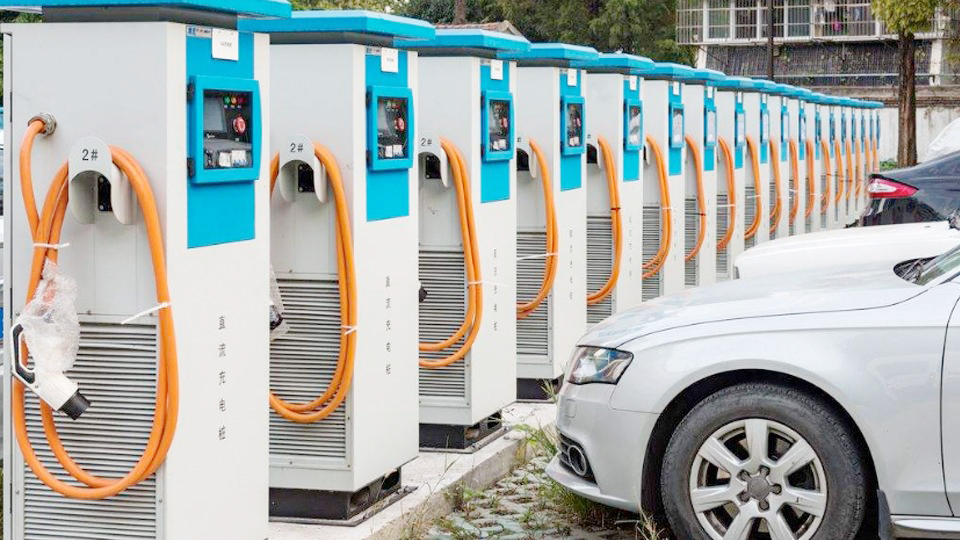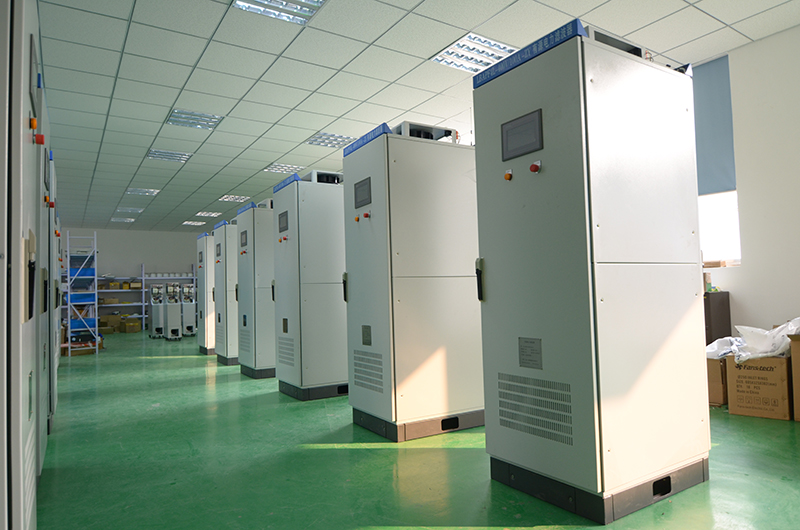Active harmonic filter in new energy charging pile harmonic compensation solution
The rapid and large-scale popularization of new energy vehicles will have a series of impacts on the regular operation of the power grid, specifically manifested in the power quality problems caused by new energy technology and new energy charging piles. In recent years, Strong Power Electric has carried out on-site power quality inspections on the new energy charging pile stations that have been put into operation and have tested the harmonics, reactive power compensation, three-phase working voltage imbalance, and working voltage deviation of the new energy charging piles. and other issues are analyzed in detail.

The main load of the new energy charging pile station is the lithium battery charging pile, and the new energy charging pile power distribution equipment system mainly supplies power for the lithium battery charging pile. At present, most of the newly built new energy charging piles are for bus battery charging, while the power of lithium battery charging piles for pure electric vehicles with high power is generally 30kW, 60kW, and 120kW. The principle of the high-power pure electric vehicle lithium battery charging pile is as follows: the three-phase power grid inputs alternating current, which is rectified by a three-phase bridge uncontrollable rectifier circuit and converted into direct current, and then supplied to the high-frequency DC-DC power converter after filtering. After direct conversion, the required DC output is filtered again to charge the drive battery of the pure electric vehicle.
From the analysis of the basic principles of lithium battery charging piles, the detection can be calculated. Lithium battery charging piles are a kind of non-linear equipment, and the front stage is uncontrollable rectification. Under normal circumstances, the current distortion rate is 30%.
If the harmonics are not rectified, it will cause problems such as increased power grid loss, overheating of machinery and equipment, and reduced service life. In addition, it will also cause problems such as working voltage distortion, and lower power factor, and affect the normal operation of other equipment in the grid.
In recent years, users have attached great importance to power quality, and some manufacturers of lithium battery charging piles have also continued to improve the power quality of their products after they are connected to the grid. According to the development of the filter control circuit at the front end of the lithium battery charging pile, it can filter out a part of the harmonic current caused by the lithium battery charging pile, thereby improving the power quality of the grid.
The customer has equipped a 1250kVA transformer in the new energy charging pile power distribution equipment system, and the main load is a lithium battery charging pile with a filter control circuit. Although the harmonics of the lithium battery charging pile with a filter control loop are significantly reduced, because the internal filter control loop LC of the lithium battery charging pile causes the lithium battery charging pile to assume a capacitive load after power-on, it will send reactive power to the power distribution equipment system. The power factor fluctuates from -0.03 to -0.97 when the lithium battery charging pile is on standby to work, which leads to overcompensation of the system, which not only causes a huge waste of energy consumption but also faces penalties from the power supply unit. In addition, the traditional reactive power compensation FC only compensates inductive reactive power, and there is no relative solution for capacitive reactive power transfer.

According to the analysis of the customer’s problems, the professional technicians of Strong Power Electric added active reactive power compensation devices to the power distribution equipment system to improve the power quality, so that the power factor of the power distribution equipment system continued to be maintained at around +0.97.
After installing the active reactive power compensation device, the comparison test before and after the application is carried out through the power quality detector: the system power factor is kept at about +0.97. The active reactive power compensation device of Strong Power Electric can be quickly applied in the power distribution equipment system with rapidly changing loads. It can also automatically distinguish and track and compensate the capacitive and rational reactive loads of the power distribution equipment system, thereby improving the use of transformers. Efficiency, reducing non-power loss of power distribution equipment system, transmission line loss, transformer loss, etc., saving energy and reducing consumption.



